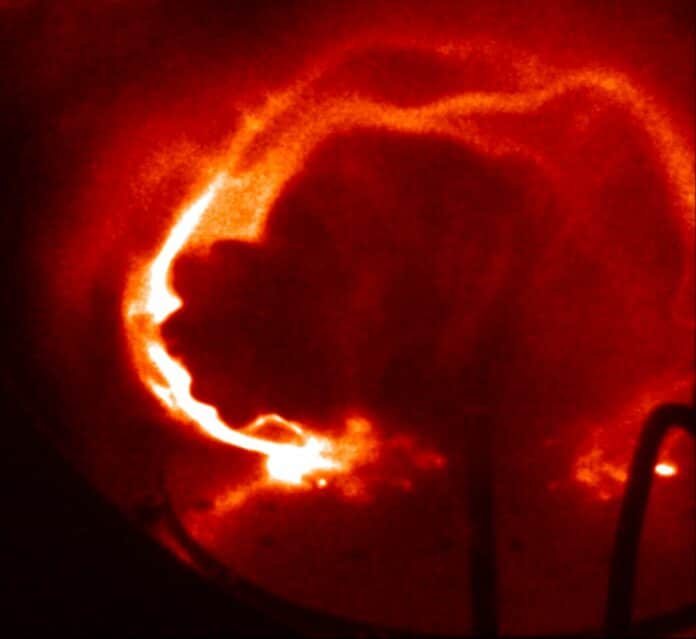Arcs of plasma called coronal loops extend from the surface of the sun along magnetic field lines. Plasma’s electrons and ions are guided by the magnetic field lines, which function as highways for charged particles. The loops can last minutes to hours and may extend 100,000 kilometers above the sun’s surface.
The loops typically develop and grow slowly, but occasionally they can suddenly blast enormous amounts of energy into space that are billions of times more powerful than the most powerful nuclear explosion on Earth. A solar flare is a name given to this abrupt burst of energy.
Researchers at Caltech have figured out how the enormous explosions spew potentially dangerous energetic particles and X-rays into space by simulating solar flares on a scale the size of a banana.
Charged particles and “hard X-rays,” which are extremely energetic electromagnetic waves similar to those used to image bones at a doctor’s office, make up a portion of the flare’s energy. Nonetheless, they have been known to interfere with communications and electrical systems. The Earth’s magnetic field and atmosphere serve as a screen to prevent life on the surface from being roasted by these torrents of energy. Moreover, they continually endanger astronauts and spaceships.
There are two ways that researchers might explain how and why the loops form and alter. The first is to watch the sun in the hopes of capturing the phenomenon in enough detail to provide useful information. The second is a lab simulation of the loops. Paul Bellan, a professor of applied physics at Caltech, opted for the latter.
Bellan constructed a vacuum chamber with twin electrodes in a facility on the first floor of the Thomas J. Watson, Sr. Laboratory of Applied Physics on the Caltech campus. He created a small solar corona loop using electrodes to imitate the event by first charging a capacitor with enough power to run the city of Pasadena briefly.
Each loop has a length of around 20 centimeters (cm), a width of about 1 cm, and an average duration of about 10 microseconds. Nonetheless, Bellan’s loops are structurally identical to the actual thing, giving him and his colleagues the freedom to replicate and research them as they like.
Bellan said, “Each experiment consumes about as much energy as it takes to run a 100-watt lightbulb for about a minute, and it takes just a couple minutes to charge the capacitor up.”
Bellan captures each loop with a camera capable of taking 10 million frames per second, and he then studies the resulting images.
Recent findings include the fact that solar corona loops appear to be made up of fractally braided strands, much like a huge rope, rather than to be a single structure.
Yang Zhang, graduate student and lead author of the study, “If you dissect a piece of rope, you see that it’s made up of braids of individual strands. Pull those individual strands apart, and you’ll see that they’re braids of even smaller strands, and so on. Plasma loops appear to work the same way.”
It turns out that structure plays a crucial role in producing energetic particles and X-ray bursts linked to solar flares. Consider neon signs, which are made of plasma and light up as electricity travels through them. Plasma is a powerful electrical conductor.
Yet, a solar corona loop becomes unstable when an excessive amount of current tries to pass through it. The loop kinks, becoming unstable in a corkscrew fashion, and the strands begin to separate. The surviving strands then experience stress from every new broken one.
Seth Pree, postdoctoral scholar research associate in applied physics and materials science and co-author of the paper, said, “Like an elastic band stretched too tight, the loop gets longer and skinnier until the strands just snap.”
The scientists saw a negative voltage spike associated with an X-ray burst at the precise moment a strand snapped after studying the process microsecond by microsecond. This voltage spike is comparable to the pressure drop that develops at the site of a water pipe’s constriction. Charged particles are accelerated to extremely high energies by the electric field from this voltage spike, and when the energetic particles decelerate, X-rays are released.
Journal Reference:
- Yang Zhang et al., Generation of laboratory nanoflares from multiple braided plasma loops, Nature Astronomy (2023). DOI: 10.1038/s41550-023-01941-x
